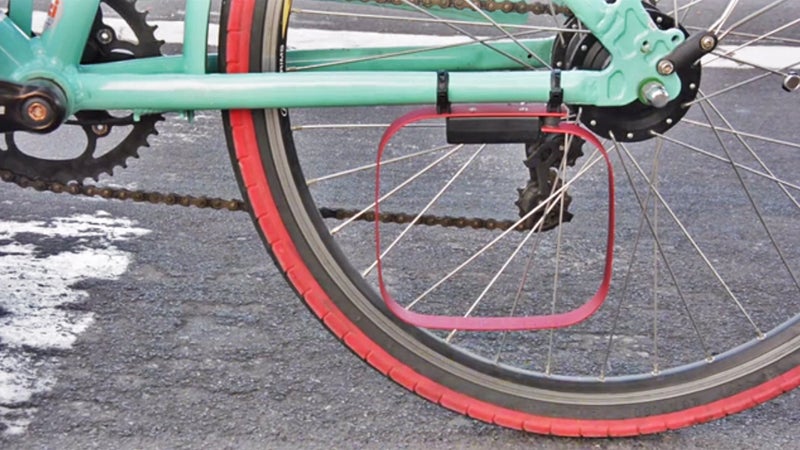For law-abiding cyclists, there are few things as frustrating as a traffic light that ignores you. You wait and wait, watching cars and trucks get their greens, while you, on your environmentally awesome steed, get nothing but one long red light.
This two-wheeled version of Waiting for Godot could come to an end thanks to a new Kickstarter project called the Veloloop that .╠ř
Here’s how it works. Many traffic lights use inductive loop sensors, an electromagnetic detection system┬áburied under the asphalt that detects vechicles and triggers the signal from red to green. It’s essentially a giant metal detector designed to sense large metal objects like cars and trucksÔÇönot bikes. But by harnessing magnetic signals, the Veloloop tricks the inductive loop into registering your 20-pound steed as a multi-ton vechicle. ┬á ┬á
“The Veloloop mimics the presence of a large metal body,” says Veloloop Co-Creator┬á, who holds two engineering degrees from Boston University and has more than 15 years of experience in the semiconductor industry.╠ř
The Veloloop founders have already secured two patents for their invention. Slightly larger than an iPad mini and described in the video as a “box of electronics with an anodized┬áaluminum antenna,” the 7-inch-square Veloloop weighs less than four ounces (batteries included), and attaches to your non-driveside chainstay. A small magnet attaches to a spoke on your rear wheel. When you come to a stop, the magnet turns on the Veloloop, which then scans for different frequencies. A red light on top of the unit turns solid red when it finds the right frequency (usually the matter of about a second).

Now, if you live in a city where lights are only triggered by traffic cameras, the Veloloop won’t help you. It also won’t help if you live in a city like Portland, Orgeon, where traffic lights are programed to recognize bikes. Other cities like Redmond, Washington, paint an X or stenciled bike on the road to indicate where cyclists need to stand to trip a sensor, usually a few feet from the curb and about three feet short of the white stop line. (There’s even showing you where to stop.)┬á
But if you live in a less bike-conscientious city that uses inductive loop sensors to “see” traffic, check out the company’s Kickstarter campaign, which started on October 7 and runs through November 7. For $99, you’ll get a Veloloop in anodized red set to ship this December.


